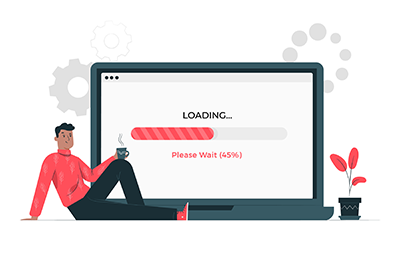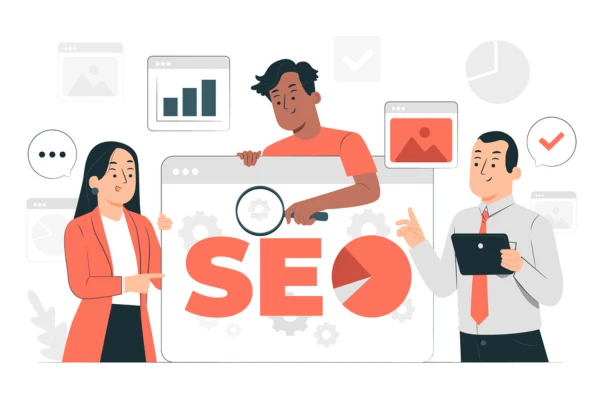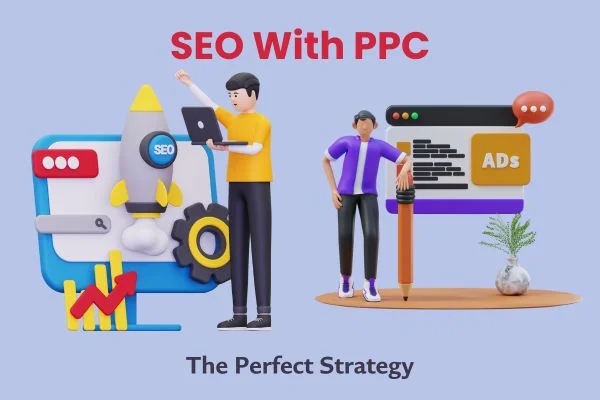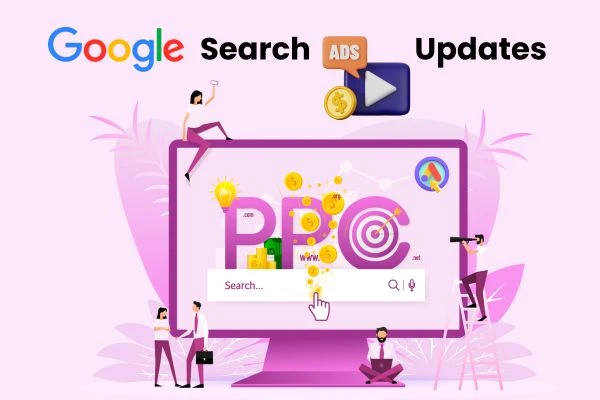Understanding the Impact of UX on SEO
What is User Experience (UX)?
UX simply means that how your website, app or digital product is being perceived by the user, which has a huge impact on your business success. The UX covers each feature of an individual's interactions with the site, such as smooth and easy navigation, website accessibility, feel and look of the website and the overall feeling of satisfaction that the modern visitors expect. It’s nothing about making just your site appealing, it’s about designing all elements of the site in such a way that the visitors have an amazing experience that leave them satisfied with your site.
A study by Neil Patel shows that websites having bounce rate above 40% have a common issue – usability issue which is part of UX.
Most people have some misunderstandings about UX aspects. So now let’s understand what are the different components of User Experience (UX):
- Usability: It measures how easy it is for users to complete their desired action on your site or app.
- Accessibility: Making sure that your website or app can be used by people with disabilities.
- Visual Design: The general look and feel of your website or app, which affects both users' first impressions and subsequent engagements.
- Content Quality: It should be very helpful, highly relevant and contain simple words for ease of understanding.
- Interaction Design: It measures how users interact with the interface of your website or app and how intuitive these are.
How UX Affects SEO Rankings
Google’s Criteria for Ranking
Google's search ranking algorithm considers numerous factors to determine the relevance and quality of a website or app such as click through rate(CTR – how many times users clicked on your site on search results page), engagement rate, engagement time(time users spend on your site), count of key events, speed, security.
Some these metrics can be found on Google Analytics tool, GSC tool and Google Page speed insights site. Don’t worry; we will go through this later in this article. “Key events” is fairly new metric introduced just recently. Then, what areas should you consider for better UX and SEO rankings?
- User Engagement: Analytics metrics like engagement time on site, viewed pages per session, and engagement rate signal to Google how much users interact with your site or app. We have analyzed our client sites and found that increase in CTR, engagement rate means better rankings in next month.
- Page Load Speed: Fast loading websites means better user experience and increased engagement rates. We at Aarav have found that now Page speed directly and instantly affects SEO rankings from our research on our client sites. A Backlinko study also showed how page speed is one of the top SEO ranking factors.
- Mobile-Friendliness: With the rise of mobile browsing, Google prioritizes sites that offer a seamless mobile experience. According to Statista, over 63% of traffic comes from mobile devices and it is increasing further.
- Secure Browsing: HTTPS is a critical ranking factor for users' data is protection. Google has officially confirmed HTTPS as a ranking factor in 2014 in Google Search Central Blog.
Now let’s see what happens if your website or app provides good signals to Google.
How User-Friendliness Affects Search Engine Algorithms
When it comes to search engine perception, user-friendliness is of paramount importance because it determines if search engines consider your site to be valuable and relevant. A user-friendly website:
- Increases Engagement Time: The sites with the good usability are the ones, where users spend more time surfing and having fun, which tells the search engines that the content is important. Also your website content should not be boring or irrelevant. A Search Engine Journal study has shown that longer engagement time translates to higher SEO rankings.
- Increases Engagement Rates: People will not leave the website as fast as they do when it meets certain UX standards and users feel engaged on your site. And this is why quality of user experience directly influences engagement rate.
- Improves Crawling and Indexing: Website architecture of clean structure help search engines in faster crawling and indexing content effectively. We have also seen that Google delays indexing if the perceived value of a site/page/content is low.

Real-world Examples
Sample Studies of Website UX Excellence and High SEO Ranking
- Example 1: Airbnb
- Initial Challenge: Lack of user engagement and peak of bounce rate.
- Solutions Implemented: Fastbooking, built-in mobile functionality and attractive looking website.
- Results: User engagement has been substantially increased, bounce rates going down and search engines improving their rankings.
- Example 2: The Guardian
- Initial Challenge: Users get deterred and frustrated if the website keeps stalling and takes too long to load.
- Solutions Implemented: We resized images, used CDN service and also eliminated any unnecessary information on the landing page.
- Results: Fast loading speed, lower user dropoff rate, and a chance to rank higher in organic search results, among others.
Understanding What a User-Friendly Website Means
A user-friendly website is like a well-planned city: easy to navigate within with clear instructions on side of roads and junctions, and you can locate the go-to places for your necessities within no time. Similarly in case of website, it should have good design, make users happy, and load fast while using easily understandable language as well. It ensures that the visitors remain happy and engaged that in the end is perfect for both visitors and SEO (search engine optimization).

Now let’s understand what factors should you consider for User-Friendliness of your website and how can you measure them and solutions for each one?
Website Loading Speed is Critical
Importance of Fast Load Times for Website or App
Fast loading times are crucial for websites both to retain users and maintain satisfaction. Now-a-days users expect pages to load more and more quickly; if they encounter slow loading of pages or elements on page, they will most likely to leave the site.
A WebPageTest study showed that even a 1-second delay in website page load time can mean 7% loss in valuable conversions.
Furthermore, a fast-loading website not only improves user experience, engagement rate but also sends good signals to search engines that your site is well-optimized, fast and reliable.
Practical Tip: Google has its own defined 6 “core web vital” metrics which are dedicated to measure website page speed and interactions only, and better results in web vitals means better SEO rankings. We at Aarav do this for our clients and see their SEO rankings get better within next week.
Which Tools Measure Page Speed and Provide Insights
- Google PageSpeed Insights: This tool/site from Google gives detailed insights of your website's speed, performance, and interactions. It also provides which areas or elements to improve with suggestions for improvements.
- GTmetrix: Offers an overall analysis of your site’s loading speed and specific recommendations to enhance it. But now searches are limited if you do not create an account.
- Pingdom: Monitors website speed from different locations around the world and provides insights on load time, server response time, page elements and resource efficiency.
Solutions: Minify Codes, Optimize Images, Reduce Server Response Time, Use Content Delivery Network (CDN)
- Minify Codes: Consider using minified versions of Html/Css and efficient but short JavaScript codes as much as possible. Remember: shorter the page size of your website, the faster it will load on users’ browsers.
- Optimize Images: This involves compressing images to reduce their file size without sacrificing their quality. Free online tools like TinyPNG, Pixelied and ImageOptim help. Use modern formats like WebP or JPEG2000. We at Aarav have seen significant improvements in pagespeed after implementing this solution in our client sites.
- Reducing Server Response Time: First things first. Be careful to choose a reliable hosting provider and appropriate hosting plan from the start, then optimize your server configurations for faster load times, and consider server-side caching for speed boost. We have a detailed article about implementing these measures for better page speed dedicated to the new core-web-vital metric INP.
- Using a CDN: A Content Delivery Network (CDN) distributes your website’s bigger file sized assets such as images, videos etc. across multiple servers worldwide. This results in faster loading times of these heavy resources for website users regardless of their browsing location. We at Aarav have found that CDN significantly increases loading speed of websites.
Mobile Functionality is a Must
Importance of Mobile-Friendly Design for Website or App
As the number of users connecting to the internet from their mobile devices is increasing globally at a fast pace, so the design of the website needs to be responsive and adaptive to mobile devices to cater these users.
According to Statista, over 54% of all website traffic globally are mobile traffic as of the 2nd quarter of 2023. Thus a non-mobile-friendly website negatively affects both user experience and SEO.
A site developed for mobile devices offers users a better experience which results in improved engagement and smaller bounce rates. Further, mobile performance is a very important part of Google’s keyword ranking algorithm.

Google’s Mobile-First Indexing
With mobile-first indexing, the specially optimized version for your site mobile displays as the main page used to measure the site’s ranking. Thus, it becomes an integral part of good practice to make sure that your site is 100% mobile-friendly.
Solutions: Responsive/Adaptive Design, Accelerated Mobile Pages (AMP)
- Responsive Design: Create a responsive design that changes according to the screen size and devices which in technical terms means different resolutions and aspect ratios. This allows your website to be displayed correctly on all devices, ranging from desktops, tablets to smartphone devices.
- Accelerated Mobile Pages (AMP): AMP is an open-source project that allows developing the fast-loading mobile Web pages which are called AMPs or Accelerated Mobile Pages. Through this, you can extremely increase your site’s mobile performance with a viewpoint to enhancing user experience.
Clear and Intuitive Navigation for User Retention
Importance of Easy Navigation for Website or App
Easy and intuitive navigation helps users find what they are looking for quickly and efficiently which creates a good user experience. While poor navigation can frustrate users, leading to lower engagement rates and lower engagement times. Clear navigation structures on the other hand will assist search engines to better know and understand your site’s hierarchy level and content.
Solutions: Logical Menu, Better CTAs, Breadcrumbs, Search Function, Consistent Design and Highlights
- Logical Menu Structure: Here 2 things you need to consider. First, try to combine and organize your menu items in logical manner and consider user intentions. Second is to use clear, visible labels for menus so that user would find anything he/she is looking for at a glance.
- Clear and Attractive CTAs: Use clear and attractive call-to-actions along with compelling text telling users what action does this CTA do. Consider user journey when arranging CTAs and this strategy will provide more conversions.

- Breadcrumbs: These are like current location markers in website. This navigation feature allows users to know where are they within a website hierarchy and allows them to go back to previous pages.
- Search Function: This allows users to find anything just by doing a search on website. This is crucial for an e-commerce site, blog or news sites and also recommended for blog sections of any website.
- Consistent Design and Highlights: Maintain a consistent design and layout throughout the website in order to increase a sense of familiarity in users and also highlight important blocks, information or CTAs through color, bold text, size or animation.
How to Optimize UX for SEO: Best Practices
With that understanding of how the various elements of UX influence SEO and how they influence, it is now possible to understand how to optimize the UX for SEO.
Perform a UX Audit on Your Website
Are you lost while doing an audit for UX? It is time to consider what exactly to take into consideration during an UX audit and which aspects of website are influencing both user experience and SEO.
- Visitor Behavior: There are tools like Google analytics and Bing analytics that are used to determine how site visitors engage with your site. Things you need to look out for is: Most visited pages in terms of pageviews, engagement – time the visitors stay or interact on the page, path exploration – visitors’ drop-off points. Look at patterns that might denote usability problems, thin content or other areas of poor UX.
- Website Navigation: Evaluate and test whether the navigation on the website is easy and accessible or not. Look for obvious or logical organization of menu, attractively displayed, well-presented and easily accessible key content and number of clicks to reach desired action or key pages.
- Content Quality: Thin and low-quality content is punished by Google since the last HCU in March. Now you have to check the level of the relevancy, clarity and the provided value and the engagement degree of the contents. Online content should be readable, useful, and attractively presented.
- Website Performance: Determine the loading speed of your site as well as its mobile-friendliness and overall performance. A slow or unresponsive site can be a source of frustration and site abandonment but also hurts SEO.

- Visual Design: Visual design has to be both pleasant and consistent. Major elements such as font, color, and design should be considered in a way to make the text interesting to read for the visitors.
- Website Accessibility: Ensure that your site can be accessed by the physically-impaired individuals, consists of image descriptions(alt text), keyboard access and good contrast.
Which Tools to Use
- Google and Bing Analytics: It provides the most detailed details regarding the user’s activity, for instance, time on site, bounce rate, and views. Use it to determine bounce-off and know user-journey.
- Hotjar: Has heatmaps, session recordings and feedback polls to make it easier for you to understand how your users are engaging with your site and where the issues might lie.
- UsabilityHub: This concerns involving users in testing that provides qualitative data on how real users view your website and navigate through it.
- PageSpeed Insights: A free performance tool developed by Google that allows access to performance, accessibility, SEO controls and further. It presents the specific recommendations the owner of the site is able to act on to enhance the UX.
Organize and Prioritize UX Enhancements
Identify Immediate Implementations and Long-Term Tasks
- Immediate Implementations: Consider initiatives that can be undertaken speedily with early effects. Some of these methods are compressing images so that they will take a shorter time to load, fixing broken links, and updating the out-of-date content.
- Long-Term Tasks: Consider in-depth modifications that will take a lot of time and resources but are long-lasting. These could go into changing the site’s structure, moving to a more capable CMS, or creating a more general content strategy.

Real-World Scenario: Improving a Business Website
We find many business websites having common UX issues as below.
Initial Stage: Commonly Found UX Issues
- Slow Website Load Times: Users have to spend much time to get what they want, causing low engagement rates.
- Poor Mobile Experience: There is a gap in a mobile strategy and as a result of this, both mobile traffic and engagement are lower.
- Unclear Navigation: Customers cannot find the right information they are looking for quickly prompting them to quit and leave the webpage.
- Outdated Content: There is no up-to-date and meaningful information on the site, causing the user loyalty and engagement to drop.
Solutions We Provide
- Speed Optimization: With compressed images, less server response time, a CDN in place, along with other smaller tasks we improved speed of business websites.
- Faster & Improved Mobile Experience: We have embraced the responsive design framework, as well as Accelerated Mobile Pages (AMP) to guarantee fast loading on mobile devices.
- Simplified Navigation: We reorganize the menu's structure for easy and intuitive navigation, add breadcrumbs and modify the CTA (call-to-action) buttons to assist in guiding the users while adhering to best practices.
- New & Up-to-date Content: Conducted a content audit to replace the old information with the new, to update the information that is already there, and to create new content, which is relevant and thus attracts users.
Results: Improved User Engagement Rates, SEO Rankings and Traffic
- Improved Engagement Time: More time was spent by the visitors reading through many contents, which suggest an improved level of satisfaction.
- Higher Engagement Rates: User's stay on the site lasted longer compared to the previous time, which demonstrated optimization of the site's usability and relevancy of the content.
- Higher Search Engine Rankings: Increased metrics of end user experience, which were reflected in better SEO performance metrics, boosted the ranking of searches and attracted more organic traffic.
- Increased Conversion Rates: Simple navigation, compelling text and powerful CTAs stimulated the signing up for purchases or submission of forms by the users.
Business owners can boost user experience and also SEO ranking significantly through these best practices for the UX optimization. Through conducting the UX audits excellently, prioritizing what is better to improve and implementing the real-world solutions can have results such as higher search engine rankings, more effective audience engagement, and eventually business success.

Partnership with SEO Companies to Enhance UX
Expectations from Top SEO Companies
Top SEO services providers have realized that user experience is very important when it comes to SEO. Their approach to UX typically includes:
- Comprehensive Audits: Performing a deep level of assessments for UX problems and opportunities. This includes measuring performance, usability, content quality, and mobile optimization across sites.
- Data-Driven Strategies: Understanding how to analyze and utilize data to enhance UX. This instills confidence in changes being made based on the actual behaviors of users.
- Holistic Optimization: The effective ways to incorporate UX improvements into an overall SEO plan, including technical SEO, content optimization, and link-building.
- Continuous Monitoring: Testing and tweaking the UX to keep improving the experience.
Case Studies
Businesses that have Been Benefited by Improving Their SEO through UX Optimization.
- E-commerce Retailer
- Initial State: Long loading times, high bounce rates and low conversion rates on mobile devices.
- Solutions Implemented: Reduced image sizes, minified scripts, made the design mobile-friendly, and optimized the checkout.
- Results: 45% increase in mobile conversions, 35% decrease in bounce rates and 20% better search results.
- Service-Based Company
- Initial State: Tough navigation, stale content, under-engagement.
- Solutions Implemented: Reformulated site navigation; evaluated and enhanced content; and bolstered call-to-actions.
- Results: Double increase in user interactions, longer session durations, and increased indexing on search engines.
- B2B SaaS Provider
- Initial State: Mobile-centric flaws, low value proposition, and low organic traffic.
- Solutions Implemented: It focused on a mobile-first design, explicit presentation of the value proposition for the homepage, and high-quality SEO content.
- Results: More than 60% of traffic from mobile devices, high customer retention and unprecedented organic growth.

Criteria for Selection of SEO Company
- Proven Track Record: Check if the agency has a track record of completing projects that achieved quantifiable outcomes. The capabilities of a particular accounting firm can be determined by reading case studies and testimonials from clients.
- Comprehensive Services: Check whether the SEO company provides services in UX optimization, technical SEO, on-site and off-site content strategy, and link building.
- Expertise and Experience: The company should however have a dedicated and professional staff with expertise in UX and SEO.
- Transparent Communication: The SEO partner should be willing to share progress information and reports to the client and should be open to any feedback.
Frequently Asked Questions
Conclusion
Summary of Key Points
- UX is important for SEO optimization affecting factors such as page load speed, mobile responsiveness, user engagement and behavior.
- Performing a UX audit and identifying the highest impact areas to improve in a website can dramatically improve both the user experience and the SEO metrics.
- Hiring the service of the best SEO company will help a site to retain its highest level of usability and position on search engines.
- Factors that can help distinguish the right SEO partner include professionalism, services offered, and code of conduct.
Why UX is essential in SEO for business owners? It is already clear that those who want to improve their business online cannot do without UX. Search engine optimization (SEO) and user experience (UX) are both important elements in the success of any business. The combination of UX enhancement and an efficient SEO service provider will let you meet your user expectations as well as the requirements of search engines to increase traffic and conversion rates.

Written by: Jitendra Raulo
Jitendra Raulo is the Founding Director at Aarav Infotech India Pvt. Ltd., a leading Web Design and Digital Marketing Company with 11+ years of experience and having headquarter in Mumbai, India, and Support Centre at Bhubaneswar, India, he is actively working with Start-ups, SMEs and Corporations utilizing technology to provide business transformation solution.















